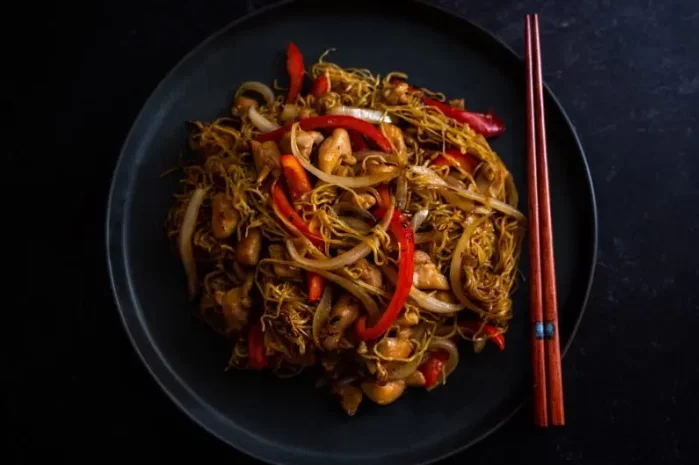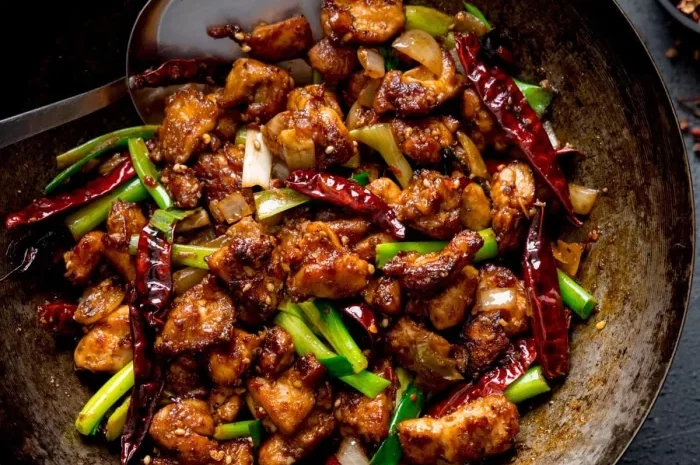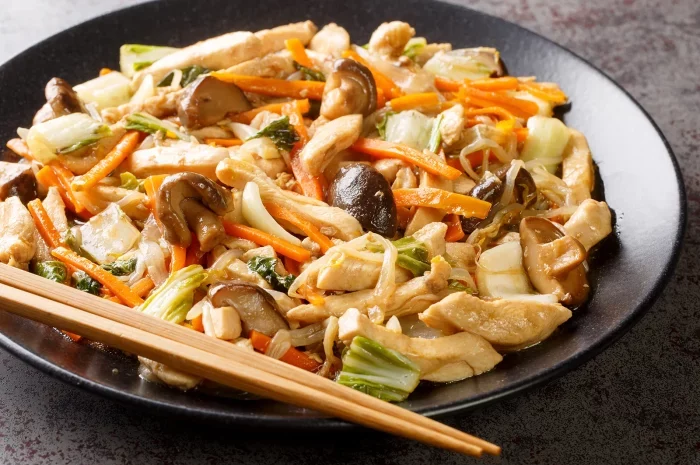Noodles hold a special place in Chinese cuisine, revered for their versatility, flavor, and cultural significance.
From delicate rice noodles to chewy wheat noodles, China boasts a diverse array of noodle varieties, each with its unique texture, shape, and flavor profile.
In this culinary journey, we’ll explore the most popular Chinese noodles, delving into their origins, preparation methods, and regional variations that have captivated palates around the globe.
The Cultural Significance of Noodles in Chinese Cuisine
Before diving into specific noodle varieties, it’s essential to understand the cultural significance of noodles in Chinese cuisine.
Noodles symbolize longevity and prosperity in Chinese culture and are often enjoyed during special occasions such as birthdays, weddings, and Lunar New Year celebrations.
The long, unbroken strands of noodles represent a wish for a long and prosperous life, making them an integral part of Chinese culinary traditions and rituals.
From North to South
China’s vast geographical expanse and diverse culinary traditions have given rise to a wide range of noodle varieties, each with its regional specialties and preparation methods. From the wheat-based noodles of northern China to the rice-based noodles of the south, let’s explore the regional diversity of Chinese noodles:
1. Lamian (Hand-Pulled Noodles):
Origin:
Hailing from the northwestern province of Shaanxi, hand-pulled noodles, or lamian, are renowned for their chewy texture and handmade craftsmanship.
Traditionally made by skillfully stretching and folding dough, lamian noodles come in various thicknesses and are often served in hearty broths or stir-fried with vegetables and meat.
2. Daoxiao Mian (Knife-Cut Noodles):
Origin:
Originating from Shanxi province in northern China, knife-cut noodles, or daoxiao mian, are made by slicing dough directly into boiling water, resulting in irregularly shaped noodles with a rustic texture.
Daoxiao mian is commonly served in robust, flavorful soups or stir-fried with savory sauces and toppings.
3. Zhajiangmian (Fried Sauce Noodles):
Origin:
Beloved in Beijing and northern China, zhajiangmian features thick wheat noodles topped with a savory, umami-rich sauce made from fermented soybeans, ground meat (usually pork), and a medley of vegetables.
This comforting dish is often garnished with fresh cucumber strips and enjoyed as a hearty meal or street food snack.
4. Dandanmian (Dan Dan Noodles):
Origin:
Hailing from the Sichuan province in southwestern China, dandanmian is known for its bold, spicy flavors and numbing Sichuan peppercorns.
Thin wheat noodles are tossed in a fiery chili oil sauce, garnished with minced pork, scallions, and peanuts, creating a tantalizing mix of heat and umami that is sure to delight spice lovers.
5. Biángbiángmian:
Origin:
Originating from Shaanxi province, biangbiangmian is named after the onomatopoeic sound made by the slapping of dough against the countertop during the noodle-making process.
These wide, belt-like noodles are typically served in a savory broth or stir-fried with vegetables and chili oil, showcasing the robust flavors of Shaanxi cuisine.
6. Guilin Rice Noodles:
Origin:
Hailing from the southern city of Guilin in Guangxi province, Guilin rice noodles are a beloved street food specialty known for their delicate rice noodles and flavorful broth.
Served with a variety of toppings such as sliced pork, pickled vegetables, peanuts, and chili sauce, Guilin rice noodles offer a refreshing and satisfying dining experience.
7. Liangpi (Cold Skin Noodles):
Origin:
Originating from Shaanxi province, liangpi are translucent, gelatinous noodles made from wheat or rice flour and served cold with a tangy, spicy sauce made from vinegar, chili oil, garlic, and sesame paste.
Often accompanied by toppings such as sliced cucumber, bean sprouts, and tofu skin, liangpi is a popular street food snack enjoyed throughout China.
Culinary Techniques and Preparation Methods
Chinese noodles are prepared using a variety of culinary techniques, including hand-pulling, knife-cutting, rolling, and steaming. Skilled noodle artisans meticulously craft each strand of noodle, ensuring optimal texture and flavor.
Depending on the noodle variety and dish, noodles may be served in soups, stir-fried with vegetables and proteins, or enjoyed cold with a flavorful sauce.
Tips for Enjoying Chinese Noodles
To fully appreciate the flavors and textures of Chinese noodles, consider the following tips:
1. Embrace Regional Variations:
Explore the diverse regional noodle specialties of China, from the hearty broths of the north to the spicy flavors of the south. Each region offers its unique culinary traditions and noodle preparations to discover and savor.
2. Experiment with Toppings and Sauces:
Customize your noodle dishes with a variety of toppings and sauces to suit your taste preferences. From savory meat toppings to tangy, spicy sauces, the possibilities are endless for creating your perfect bowl of noodles.
3. Appreciate Handcrafted Noodles:
If possible, seek out restaurants or noodle shops that specialize in handcrafted noodles made using traditional techniques. The artistry and skill of noodle artisans can elevate your dining experience and offer a taste of authentic Chinese cuisine.
4. Pair with Complementary Side Dishes:
Enhance your noodle meal with complementary side dishes such as dumplings, steamed buns, or pickled vegetables. The combination of noodles and side dishes provides a balanced and satisfying dining experience.
5. Enjoy with Tea or Refreshing Beverages:
Pair your noodle meal with traditional Chinese tea or refreshing beverages such as iced tea, fruit juice, or herbal drinks. The contrast of flavors and temperatures can enhance the overall dining experience and cleanse the palate between bites.
Conclusion
In conclusion, Chinese noodles represent a culinary treasure trove of flavors, textures, and cultural heritage.
From the hand-pulled noodles of the north to the rice noodles of the south, eachvariety offers a unique gastronomic experience that reflects the rich tapestry of Chinese culinary traditions.
So, the next time you crave a hearty and satisfying meal, consider embarking on a culinary journey through the world of Chinese noodles.


























